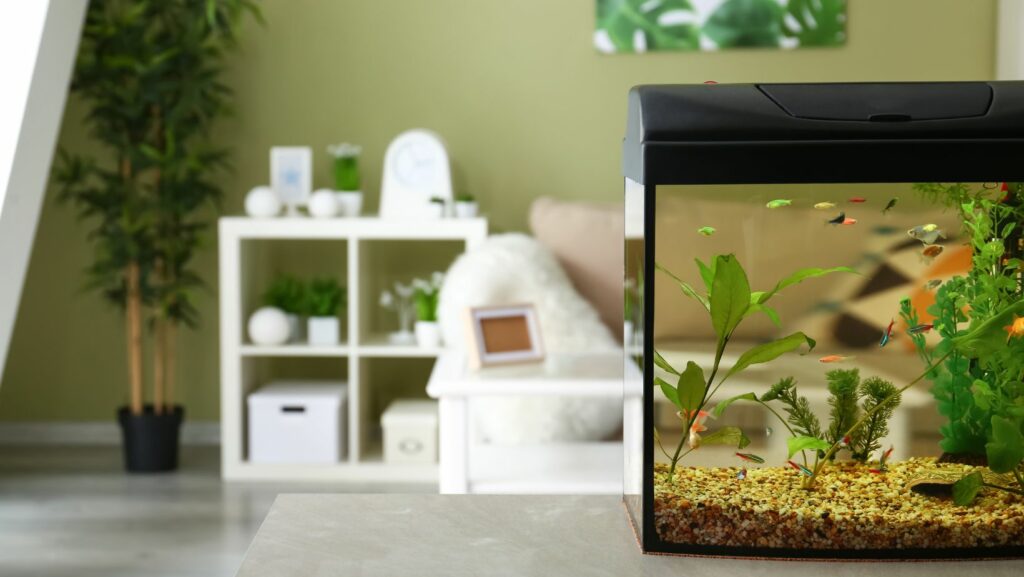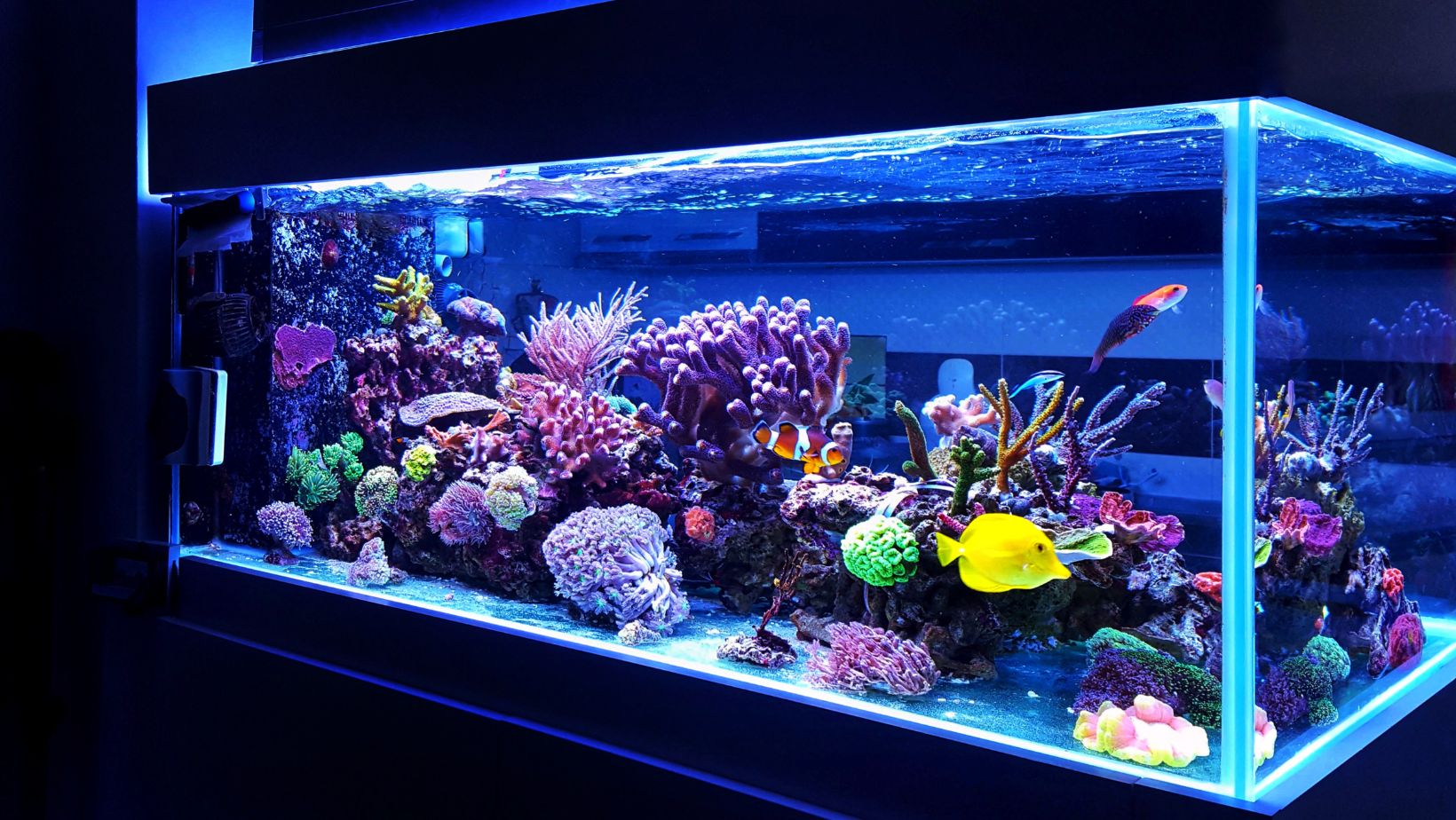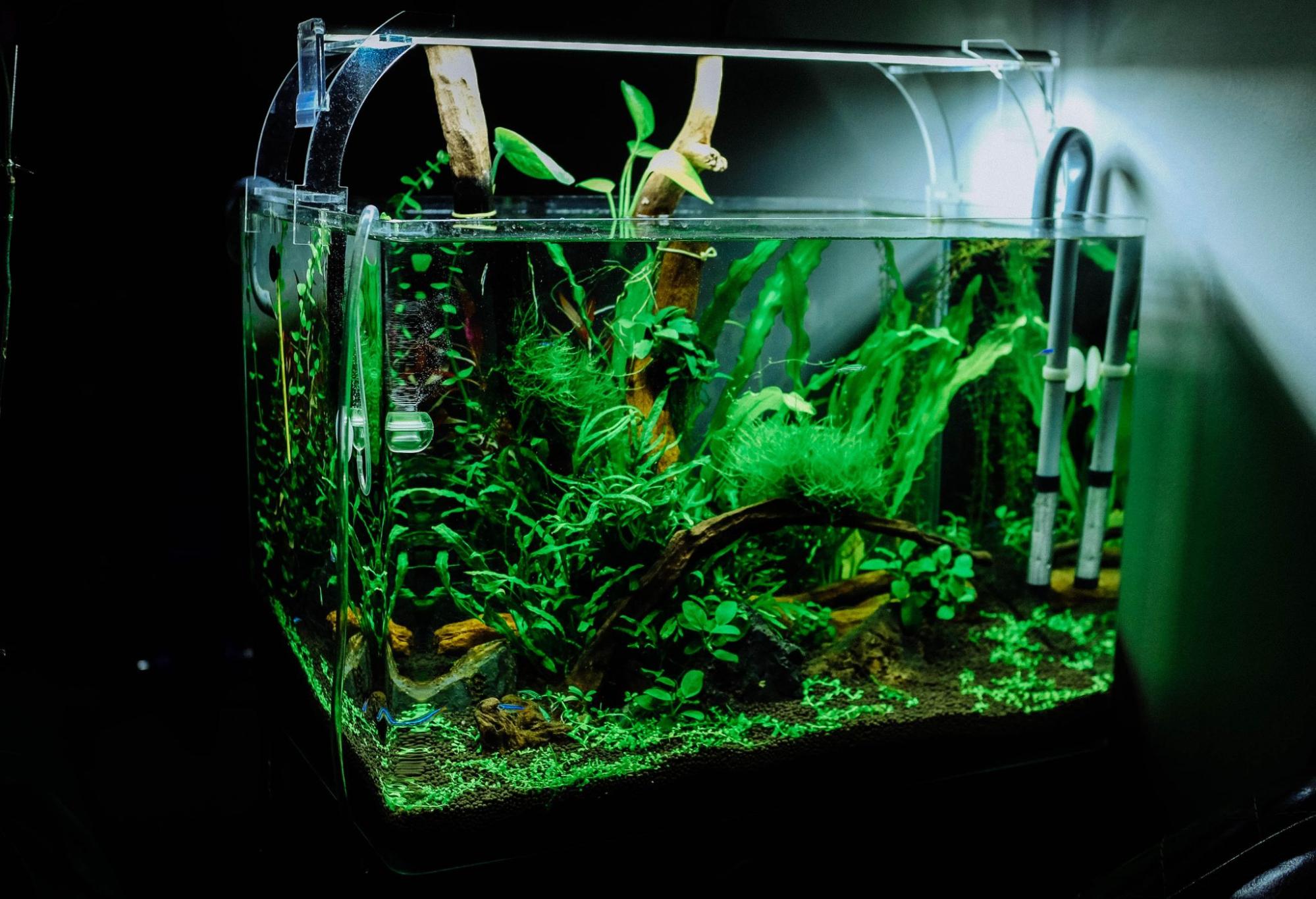Aquariums bring a splash of underwater beauty into your home, providing a fascinating spectacle and offering a peaceful retreat for your mind.
However, keeping your fish healthy and the water sparkling clear requires regular upkeep and a good understanding of some basic principles.
We will explore three main areas of home aquarium maintenance: the importance of hygiene, the proper feeding of fish, and understanding the water chemistry.
The Importance Of Hygiene in Aquariums
Maintaining the cleanliness of your home aquarium is crucial for the welfare of your fish.
Neglecting this responsibility can lead to murky water, uncontrolled algae growth, and, worst of all, the spread of diseases amongst your fish.
Hygiene is not simply about keeping the tank looking clean; it’s about creating a suitable living environment for your aquatic friends.
Water Changing for Beginners
The water in your aquarium isn’t just a space for your fish to swim around in; it’s their life source, where they eat, sleep, and breathe.
As a result, it’s not enough to just top up the water when it seems low. Regular water changes are a fundamental part of aquarium hygiene.
To change the water, first, turn off any electrical equipment, such as heaters and filters. Remove about 10-20% of the tank’s water using a siphon or a small pump.
As you remove the old water, it’s also a good time to clear away any noticeable debris.
The freshwater you add should be treated to remove chlorine and must match the temperature of the tank to prevent thermal shock.
Remember, the aim of water changing is to reduce the buildup of waste products, not to completely sterilize the environment.
Some bacteria and microorganisms are beneficial to your fish’s health. Conduct water changes every one to two weeks, depending on the size of the tank and the number of fish.
Cleaning the Tank and Accessories
While water changes help reduce the amount of waste in the water, physical cleaning of the tank and its accessories is also vital.
Over time, algae and other waste can accumulate on the glass, decorations, and equipment.
For cleaning the interior glass of the tank, use a magnetic algae scraper or a sponge designed specifically for aquarium use.
Avoid using household cleaning tools or chemicals, as they can harm your fish. Decorations and equipment like filters and heaters can be cleaned during water changes.
Make sure to clean these items in the water taken from the aquarium to avoid killing beneficial bacteria.
Substrate Cleaning
The substrate, which can be gravel, sand, or other materials, forms the base of your aquarium. It also traps a lot of debris and waste.
Use a gravel cleaner or siphon to stir up and remove this waste.
Just like with water changes, aim for regular substrate cleaning, but do not overdo it, as you might remove beneficial bacteria necessary for a balanced ecosystem.
Proper Feeding of Fish
Feeding your fish correctly is equally crucial to their health and happiness.
Not only does it directly impact their well-being, but it also affects the water quality and, thus, the overall health of the aquarium.
Understanding Fish Dietary Needs
Fish are a diverse group with different dietary requirements. Some are omnivores, some herbivores, and others carnivores.
Research your fish species to understand what they need.
There are many types of fish food available, including flakes, pellets, live food, and freeze-dried food. Make sure the food you choose is suitable for your fish.
How Often and How Much to Feed
Overfeeding is a common mistake in fish-keeping. Not only can it lead to health problems for the fish, but uneaten food also decomposes and worsens the water quality.
A general rule is to feed your fish as much as they can consume within two to three minutes, once or twice a day.
Alternatives and Treats
Just like humans, fish also appreciate a varied diet. Depending on the species, consider offering them alternatives and treats occasionally.
Live or frozen foods like brine shrimp or bloodworms can be a great source of protein for carnivorous fish.
On the other hand, blanched vegetables can be a healthy snack for herbivorous species.
Understanding the Water Chemistry
Water chemistry might sound complex, but it is vital for the health of your aquarium.
It involves maintaining the right parameters, such as pH, hardness, ammonia, nitrites, and nitrates.
Testing Water Parameters
Regular testing of water parameters is crucial in detecting any issues early on. Aquarium test kits are available, which can measure the levels of ammonia, nitrites, nitrates, pH, and other water parameters.
Any sudden changes in these parameters can be stressful for the fish and may indicate a problem.
Understanding the Nitrogen Cycle
The nitrogen cycle is a biological process that helps convert harmful waste products into less harmful substances.
Understanding and managing this cycle is vital for your fish’s health.
It involves the breakdown of waste like fish excreta and uneaten food into ammonia, which is then converted into nitrites and finally into nitrates by beneficial bacteria.
Water Conditioning
Water conditioners are products that make tap water safe for aquarium use.
They work by neutralizing chlorine and heavy metals that are harmful to fish. Using a water conditioner is a necessary step when adding new water to the tank during water changes.
Final Remarks
Maintaining a home aquarium is an art, combining the elements of hygiene, feeding, and water chemistry to create a vibrant and safe ecosystem for your fish.
Regular and thoughtful maintenance goes beyond mere aesthetics, forming the bedrock of your aquatic pets’ health and well-being.
By diligently changing and testing water, cleaning the tank, understanding your fish’s dietary needs, and mastering the nuances of the nitrogen cycle, you can offer your aquatic friends a thriving habitat.
Such commitment not only assures the vibrancy of your aquarium but also adds a layer of gratification to the hobby of fish-keeping as you watch your pets flourish in the environment you’ve diligently maintained.
As you continue to nurture your aquatic world, remember that each effort you put into your aquarium echoes in the colors, behaviors, and vitality of your fish, making your home aquarium a truly mesmerizing spectacle.




More Stories
What Are The Different Types Of Lawn Sweepers And Which One Is Right For You
How Home Improvements Can Boost Comfort, Efficiency & Resale Value
A Beginner’s Guide to Growing Houseplants